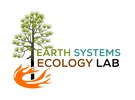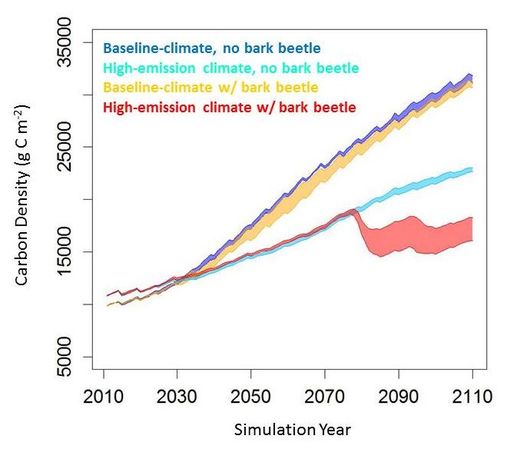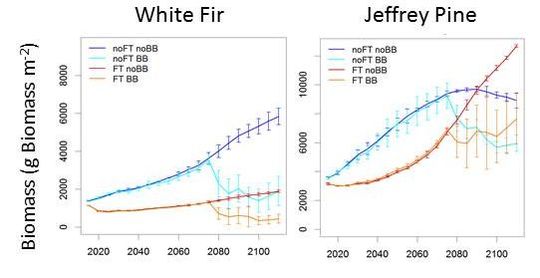|
Warming and drying climate, bark beetle outbreaks, and wildfire all pose challenges to western US conifer forests. Widespread bark beetle outbreaks have been impacting large swaths of western North America. In the Lake Tahoe Basin, there is a strong link between severe drought and beetle outbreaks. Beetle outbreaks can also be affected by the density of their hosts because many beetle species use specific tree genera. As an example, mountain pine beetle only uses pine trees for hosts. In drier, more fire-prone forests, fire-exclusion has increased tree density and in some cases host density. This change in structure has also increased the risk of stand-replacing fire. Since management activities to reduce the risk of stand-replacing fire typically involve reducing tree density and restoring surface fire, we sought to determine if these treatments might also reduce beetle outbreak potential. In a study of Lake Tahoe Basin forests, led by Rob Scheller, we used the LANDIS-II simulation model to determine if beetle outbreaks would increase with climate change and if management activities to reduce wildfire hazard would reduce the impacts of beetle outbreaks. We hypothesized that climate change would increase beetle outbreaks and reduce carbon uptake by the forest and that management activities would reduce beetle-caused mortality and increase carbon uptake by the forest. We found that climate change without beetles caused a reduction in carbon stored in trees and that beetles without climate change caused a reduction in carbon stored in trees. However, the combined effects of climate change and bark beetles caused a large reduction in the amount of carbon stored in trees across the study area (see Figure 1). White fir and Jeffrey pine are two of the more common species in these forests. Previous research has shown that prior to fire-exclusion, Jeffrey pine was more common than white fir and with fire exclusion, white fir has become more common. In areas around communities, managers often focus harvesting efforts on white fir to reduce fire hazard. When we looked at these individual species in the areas treated around communities, we found that without management bark beetles caused both species to decline (see Figure 2). When we simulated management and no bark beetles, white fir decreased and Jeffrey pine increased. The combined effects of beetles and management really reduce the amount of white fir and resulted in a similar amount of Jeffrey pine as the simulation that only included beetles. Our management simulations did not include treating all forests within the Basin. Treatments focused on communities and roadways. Because climate projections for the Basin get warmer and drier later in the 21st century, we looked at the chance that these forests become a source of carbon to the atmosphere with continued climate change and bark beetles. We found that the chance of these forests become a source of carbon to the atmosphere increases later this century with both beetles alone and beetles and management combined. Reducing the impacts of beetles may require more thinning to further reduce host density. These results show that we have to consider the full suite of disturbance agents when trying to determine the best path forward for managing forests under climate change.
0 Comments
|
Details
Archives
October 2023
Categories
All
|



 RSS Feed
RSS Feed